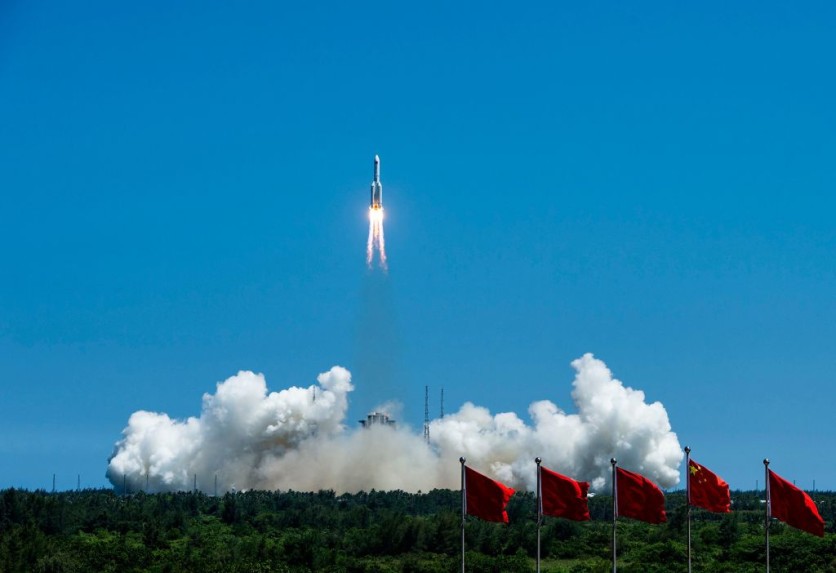The Philippine Space Agency (PhilSA) has issued a warning about falling rocket space debris in response to China's final launch into space in 2022, which took place on Thursday, Dec. 29, reported first by Space.com.
Thursday saw the launch of a Chinese Long March 3B rocket from the Xichang Satellite Launch Center containing the Shiyan-10 02 satellite, which will be used to test new space technologies in orbit, particularly for space environment tracking.

Drop Zone
The rocket boosters and payload fairing, among other unburned debris, are anticipated to land in a drop zone area near Recto Bank, about 137 kilometers from Ayungin Shoal and 200 kilometers from Quezon, Palawan, according to the PhilSA.
The unburned space junk is intended to be thrown away once the rocket hits space. Even though it is not predicted that falling debris will affect land structures or populated areas within Philippine territory, it still poses dangers to fishing boats, aircraft, and ships that travel close to the drop zone.
Due to several variables, including the Earth's rotation, weather, and climate conditions, the exact drop zone region may alter. The debris could potentially drift and wash up on surrounding shores as it floats in the air, as per PhilSA.
Additionally, it is now impossible to rule out the prospect of an uncontrolled re-entry of the rocket's upper stages into the atmosphere once they return from orbit.
The Long March 3B launch on Thursday was China's second launch of the week, according to Space.com.
From the Taiyuan Satellite Launch Center, the nation launched the Gaofen-11 04 satellite on Tuesday.
According to China Central Television, the Gaofen-11 04 Earth observation satellite is intended to be utilized for resource surveys, crop yield estimation, road network design, urban planning, and disaster assistance.
PhilSA warned the public to contact local authorities right once they detect the presence of debris.
Additionally, PhilSA advises the public against picking up or getting too close to any things that may still contain harmful remains, such as rocket fuel.
Read Also : FCC New Rules Require Satellites To Be Deorbited Within 5 Years of Completion to Avoid Space Junk Risks
Space Debris
According to the European Space Agency's (ESA) Space Debris Office in Darmstadt, Germany, more than 630 breakups and other odd events in orbit have so far resulted in space debris.
After China launched its third and final module for its Tiangong space station last month, a sizable piece of Chinese space junk was predicted to crash back to Earth. This debris came from the core stage of a Long March 5B rocket.
According to NASA, there are around 500,000 space debris pieces between 1 cm and 10 cm in diameter and about 25,000 items larger than 10 cm that is believed to be in orbit.
The US Global Surveillance Network is currently monitoring 30,000 objects in Earth orbit that are larger than 4 inches (10 cm). The ESA also claims that one million particles are presently orbiting the Earth at a speed of 0.4 inches (1 cm).
Related Article : [Do You Know?] There's A 10% Chance Of Space Junk Killing Someone, Especially in the Global South

ⓒ 2025 TECHTIMES.com All rights reserved. Do not reproduce without permission.




